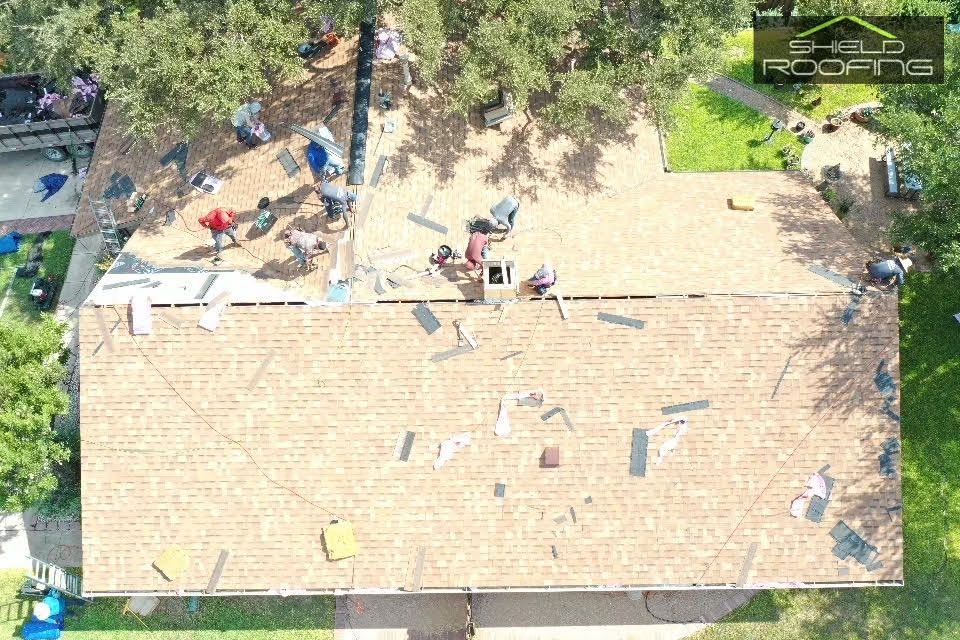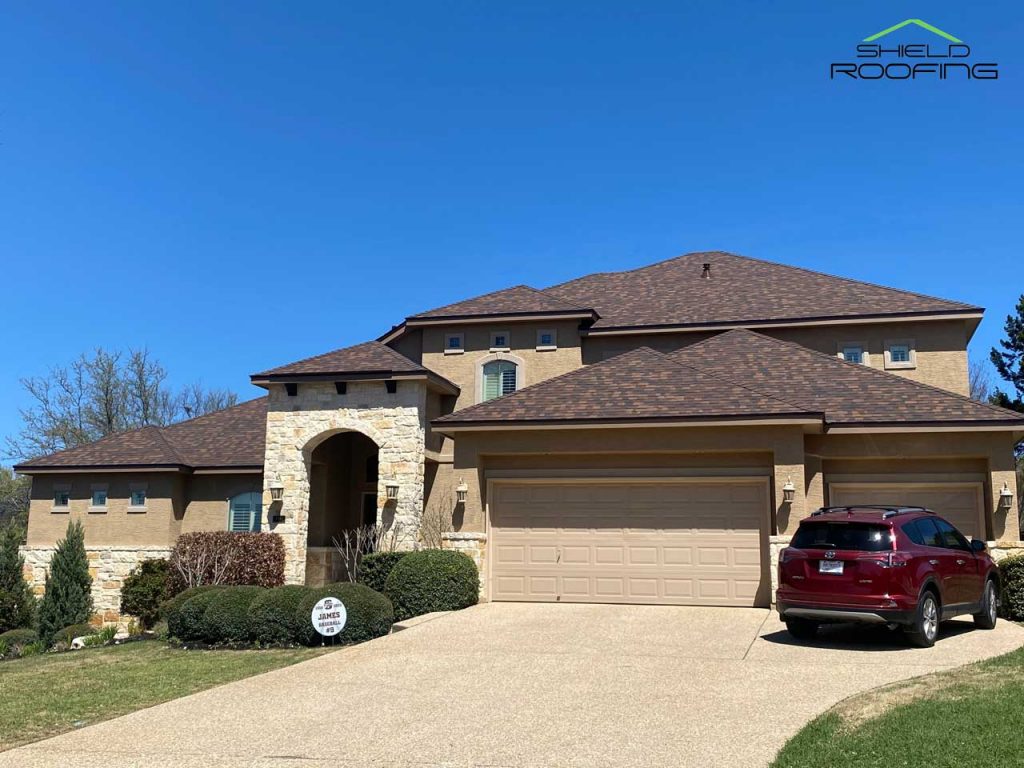Are you a San Antonio homeowner in need of a roof replacement? The process can be daunting, but fear not – this guide is here to help you navigate through it all. From assessing the condition of your roof to finding the right contractor and selecting the right material, we’ve got you covered.
First things first, you’ll need to assess the condition of your roof. Is it leaking? Are shingles missing or damaged? Is it more than 20 years old? These are all signs that it’s time for a replacement. But don’t worry, this guide will walk you through the entire process and ensure you make informed decisions every step of the way. So, let’s get started on your journey towards a new and improved roof.
Assessing the Condition of Your Roof
Now it’s time to take a closer look at your roof and see how it’s holding up. You’ll want to get up close and personal with your shingles and check for any signs of wear and tear. Start by inspecting the shingles themselves. Look for any cracks, tears, or missing pieces. If you see any of these signs, it’s likely that your roof has sustained damage.
Next, check the flashing around your chimney and vents to ensure that they are secure and in good condition. Flashing is the material used to seal the area where the chimney or vent meets the roof. If it’s damaged, it can allow water to seep into your home. Finally, inspect your gutters and downspouts. They should be attached securely and free of debris. If you see any damage or clogs, it’s time to clean them out. By conducting a thorough roof inspection and damage evaluation, you can identify any potential issues and address them before they become major problems.

Choosing the Right Roofing Material for Your Home
Picking the perfect roofing material for your house could make all the difference in the world. Not only does it affect the overall look of your home, but it also plays a crucial role in protecting your family and belongings from the elements. When choosing the right roofing material, it’s important to consider both the cost comparison and environmental impact.
There are a variety of roofing materials available, each with its own advantages and disadvantages. Asphalt shingles are the most popular choice due to their affordability and ease of installation. However, they have a shorter lifespan compared to other materials and are not as environmentally friendly. Metal roofing, on the other hand, is more expensive but lasts longer and is recyclable. Other options include clay or concrete tiles, which are durable and energy-efficient, but can be heavy and require additional support. Ultimately, it’s important to weigh the pros and cons of each material and choose the one that best fits your budget and values.
Finding the Right Contractor for the Job
When you’re searching for the perfect roofing contractor, it’s like trying to find a needle in a haystack. There are so many options out there, and it can be overwhelming to try and narrow them down. However, there are a few key things to look for when trying to find the right contractor for your roof replacement project.
First and foremost, you want to make sure that the contractor you choose has the necessary qualifications. This means that they should be licensed and insured, and have experience working with the type of roofing material that you have chosen. Additionally, you may want to look for a contractor who has certifications from manufacturers, as this can indicate a higher level of expertise. When it comes to pricing considerations, it’s important to remember that the cheapest option may not always be the best. Look for a contractor who offers competitive pricing, but also provides detailed estimates and is transparent about their pricing structure. Ultimately, you want to find a contractor who is reliable, trustworthy, and will do the job right the first time.
Preparing Your Home and Property for the Replacement Process
Make sure you’re fully prepared for the upcoming roofing project by taking the time to secure and protect your valuable possessions and sentimental items. Clear the area around your home by removing any patio furniture, potted plants, and other items that could get damaged during the replacement process. Cover your swimming pool and remove any delicate items from your yard to prevent them from getting stepped on or damaged by falling debris.
It’s also important to communicate with your neighbors about the upcoming roofing project. Let them know the expected start and end dates, and apologize in advance for any noise or inconvenience that may occur. You may also want to consider giving your neighbors contact information for your roofing contractor in case they have any concerns or questions during the project. By taking these steps, you’ll be setting yourself up for a smooth and stress-free roof replacement process.
The Roof Replacement Process: What to Expect
As you begin the roof replacement process, you’ll likely notice a team of skilled professionals arriving at your home, ready to tackle the job. They will start by removing the old roofing materials, inspecting the decking and fixing any issues before installing the new roof. This process can take anywhere from a few days to a few weeks, depending on the size of your home and the complexity of the roofing system.
During this time, you can expect to receive roofing quotes from your contractor and possibly file an insurance claim if your roof was damaged by a covered event. It’s important to stay in communication with your contractor throughout the process to ensure that everything is going according to plan and to address any concerns or issues that may come up. With the right team working on your roof replacement, you can rest easy knowing that your home is in good hands.

Maintaining Your New Roof for Long-Term Durability
Now that you know what to expect during the roof replacement process, it’s time to focus on maintaining your new roof for long-term durability. Regular inspections are the key to ensuring your roof stays in top shape. Make it a habit to check your roof at least twice a year, preferably during spring and fall. Look for any signs of damage or wear and tear, such as cracked or missing shingles, gaps in the flashing, or water stains on the ceiling.
In addition to regular inspections, proper ventilation is crucial for the longevity of your roof. Without proper ventilation, heat and moisture can build up in your attic, causing damage to your roof and shortening its lifespan. To ensure proper ventilation, make sure your attic has adequate insulation and ventilation vents. Your roofing contractor can help you determine the right ventilation system for your home. With regular inspections and proper ventilation, you can enjoy a long-lasting, durable roof that protects your home and family for years to come.

